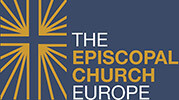The Spanish Episcopal Reformed Church was formed in Gibraltar in 1868, during the first period of religious liberty, when Juan Bautista Cabrera, former Roman Catholic priest, joined other Catholic priests and Protestant pastors to reform the church in Spain on the model of the English Church and the old Mozarabic Christians who had never been under papal jurisdiction.
In 1878 these reformed congregations in Spain requested the archbishops of the Church of England to consecrate a bishop. The Lambeth Conference which met the same year expressed its support and ventured to suggest that, since the American Episcopal Church was extending the episcopate to Mexico, the new bishop in Mexico might be persuaded to visit Spain and Portugal, and "render whatever assistance as may seem to him practicable and advisable". Accordingly the Episcopal Bishop of Mexico, H.C. Riley, agreed to take under his care the several reformed congregations on the Iberian Peninsula. In 1880, he visited Spain and Portugal and helped to organize the congregations into two churches, each with its own synodical government. In 1883, however, Bishop Riley's episcopal functions were brought to an end in Spain and Portugal due to a disagreement with the American Board of Missions.
At the Synod of 1880, the Revd Cabrera was elected the first bishop of the Spanish Church and an overture was made to the Anglican Church of Ireland for his consecration. Lord Plunket, Bishop of Meath and later Archbishop of Dublin, had been interested in the two Iberian churches and determined to act to consecrate a bishop in Spain. After overcoming many problems, in 1894 Archbishop Plunket and two other Irish bishops consecrated Revd Cabrera as Bishop. During Bishop Cabrera's Episcopate, the Spanish Church experienced a steady growth; at the time of his death in 1916 there were a good number of churches and parish schools.
After the death of Bishop Cabrera, the Church began to experience difficulties. It was not possible to elect a new bishop and episcopal jurisdiction was assumed by Archbishop Gregg of Dublin, who made regular visits to Spain to confirm and ordain. In 1936 the Spanish Civil War broke out. It ended with the victory of the Fascists in 1939, the same year the Second World War began. These events made episcopal visits from Ireland and any other Anglican church impossible. Until 1951, the Church was isolated from the rest of its sister churches. The regime of Franco tried to destroy the Spanish Episcopal Church and all other non-Roman churches. The government closed some churches and all the parish schools. Churches in the cities had to conduct services behind closed doors. At one point the ordained ministry of the church was down to two aged priests and a deacon.
At last, in 1951, the Primate of Ireland, Archbishop McAnn, was granted a visa for a three-day visit which restored the links to the mother church of Ireland. Archbishop McAnn used his visit to advance Deacon Santos M. Molina to the priesthood and ordain five new deacons. At a Synod in 1954, the Revd Molina was elected the second bishop of the church and was consecrated by Archbishop McAnn assisted by the Bishops of Minnesota and Indianapolis, Stephen E. Keeler and Reginal Mallet, as the Episcopal Church U.S.A. had once again taken an interest in the Spanish Church.
After more than 40 years without a bishop, Bishop Molina began the reconstruction of the church under many adversities, including the opposition of the government. Nevertheless, progress was made and relationships were established with churches in the Anglican Communion in Ireland, England, the United States of America, Wales, South Africa, and the Philippines as well as with the Old Catholic Churches of Europe. Bishop Molina passed away in 1966 and in the same year the Revd Ramón Taibo was elected the third bishop of the church. He was consecrated in 1967.
With the death of General Franco in 1975, Spain entered a period of transition from dictatorship to democracy and the non-Roman churches could begin to think of more than mere survival and start to evangelize.
In October 1980, the Spanish Episcopal Reformed Church was fully integrated into the Anglican Communion, placed under the metropolitan jurisdiction of the Archbishop of Canterbury. The ceremony was presided by Bishop Ross Hook, personal representative of the Archbishop of Canterbury. The Revd Arturo Sánchez Galán was elected bishop coadjutor in 1979 and was consecrated in October 1981 by Bishop Ramón Taibo with Bishop Robert C. Witcher of Long Island and Bishop Leonardo Romero of Mexico. In 1983, upon Bishop Tiabo's retirement, Bishop Sánchez was installed as the fourth bishop of the Spanish Episcopal Reformed Church by Bishop David Leake, Primate of the Southern Cone (South America), personal representative of the Archbishop of Canterbury.
The Spanish Constitution of 1978 legally recognized the existence of non-Roman Churches and granted them full liberty to perform their mission. Together with the Portuguese Church, a Partners in Mission consultation was held to help the church to adjust to the new situation of liberty and to full integration into the Anglican Communion.
The Spanish Episcopal Reformed Church is evangelizing, planting new missions, and participating in the ecumenical activities being developed in our country.
At present, the Spanish Church has 22 licenced priests in the Diocese. There are 20 congregations divided into three areas, each under the direction of an Archdeacon: Area 1 – Cataluña and Baleares, Area 2 – Andalucía and Canarias, and Area 3 – Central and Northern Spain. The Church also has an ecumenical centre in Sevilla and a camp centre in Alcoceber (Mediterranean coast).
The Spanish Episcopal Reformed Church is a member of the World Council of Churches and the Conference of European Churches.
Carlos López Lozano Bishop April 1998
Click here to proceed to the SERC website
